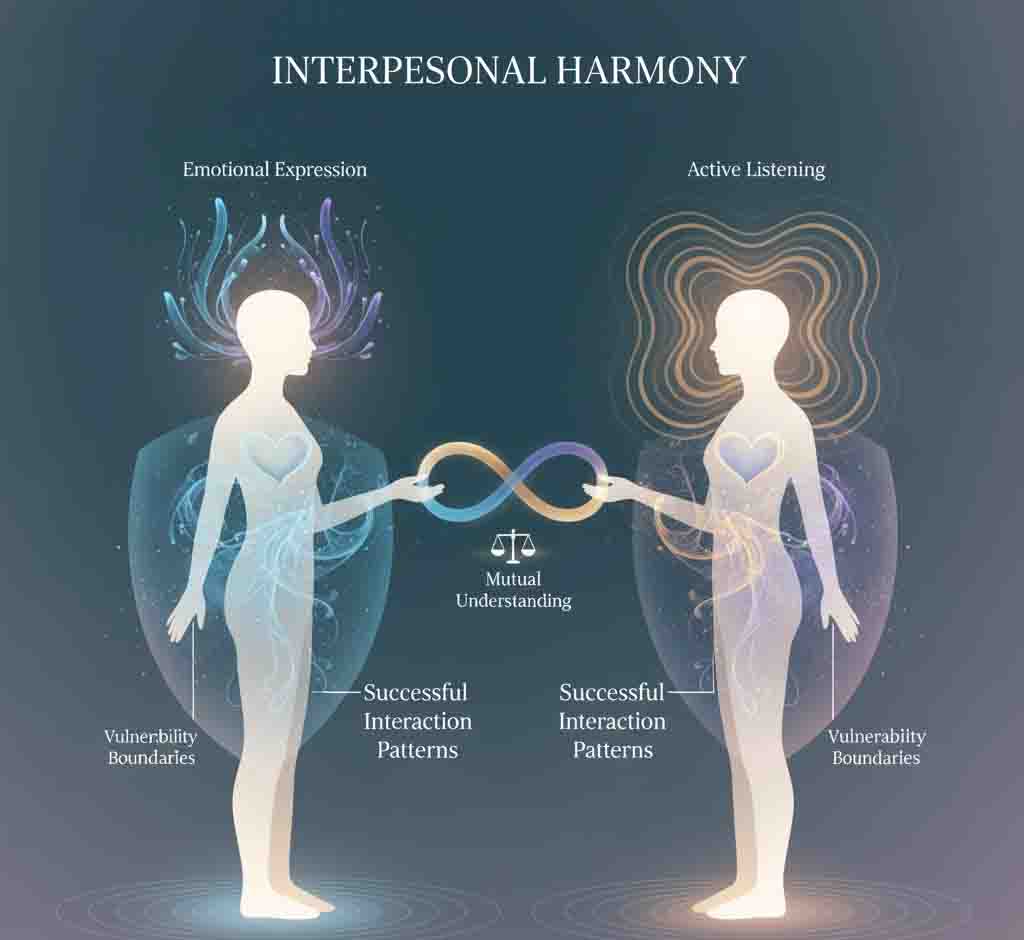Table of Contents
-
Defining Authentic Connection
1. Defining Authentic Connection
Authentic connection represents a profound state of mutual understanding where individuals feel truly seen, heard, and valued. It transcends superficial interaction, creating psychological safety for vulnerability and genuine self-expression. This connection manifests as emotional resonance – the experience of shared understanding that validates our inner world.
Unlike casual socializing, authentic connection involves reciprocal empathy and the courage to be imperfect. Neuroscience research reveals that genuine connection activates specific brain regions associated with reward and safety, while reducing activity in threat-response areas. This biological response explains why authentic relationships significantly impact our wellbeing and life satisfaction.
Q: How does authentic connection differ from simple friendship or acquaintance?
A: Authentic connection involves consistent emotional presence, mutual vulnerability, and the capacity to navigate conflicts while maintaining respect. Unlike casual friendships, it withstands challenges and grows stronger through difficult conversations.
2. The Psychology of Human Bonding
Human connection operates through sophisticated neurobiological processes. Mirror neurons enable us to resonate with others’ emotional states, while oxytocin release during positive interactions creates biological foundations for trust. The polyvagal theory explains how our nervous system regulates social engagement, with safety being the prerequisite for genuine connection.
Attachment theory provides crucial insights into connection patterns. Our early relationship experiences create internal working models that influence how we approach connections throughout life. Understanding these patterns allows us to develop more secure attachment behaviors, transforming how we engage in relationships.
Q: Can people change their connection style if they’ve historically struggled with relationships?
A: Absolutely. Through neuroplasticity and conscious practice, individuals can develop secure connection behaviors. This requires self-awareness, willingness to practice new skills, and patience through the learning process.
3. Core Principles of Deep Connection
Psychological Safety
Create environments where vulnerability is welcomed rather than judged. Psychological safety enables risk-taking in emotional expression, allowing relationships to move beyond superficial levels.
Emotional Presence
Authentic connection requires complete attention – setting aside distractions and focusing wholly on the interaction. Presence communicates respect more powerfully than any verbal assurance.
Reciprocal Vulnerability
Relationships deepen through appropriate, escalating self-disclosure. The vulnerability balance must feel equitable, with both parties gradually sharing authentic aspects of themselves.
Empathic Accuracy
Develop the skill of accurately understanding others’ perspectives without imposing personal interpretations. This requires curiosity, active listening, and withholding premature judgment.
Q: How can I establish healthy vulnerability boundaries?
A: Healthy vulnerability shares genuine feelings while maintaining personal dignity. It should never leave you feeling exposed or regretful. Begin with lower-risk sharing and gradually increase depth as trust develops naturally.
4. Building Connection: Step by Step
Phase 1: Foundation (Weeks 1-2)
Develop self-awareness through daily reflection on communication patterns. Practice presence exercises during routine interactions, focusing entirely on the person before you.
Phase 2: Skill Development (Weeks 3-6)
Implement reflective listening by accurately paraphrasing content and emotion before responding. Practice asking open-ended questions that invite deeper sharing.
Phase 3: Integration (Weeks 7-12)
Initiate meaningful conversations where you share something personally significant. Join interest-based communities to practice new skills in low-pressure environments.
Phase 4: Deepening (Months 4-6)
Establish connection rituals with important relationships. Practice navigating minor disagreements with focus on understanding rather than winning.
Q: What if my connection attempts feel one-sided or unreciprocated?
A: Relationships require mutual investment. If efforts consistently feel one-sided, respectfully communicate your needs. If patterns don’t change, it may indicate incompatibility – which reflects relationship dynamics, not your worth as a person.
5. Common Connection Barriers
Fear of Vulnerability
Many people avoid emotional risk to prevent potential hurt. Solution: Recognize that vulnerability is the gateway to intimacy. Start with small emotional risks in safe relationships.
Digital Distraction
Constant connectivity fragments attention, undermining presence. Solution: Establish device-free zones for meaningful interaction. Practice single-tasking in conversations.
Assumption Traps
Projecting interpretations onto others’ behaviors rather than seeking clarification. Solution: Cultivate curiosity – approach interactions with openness rather than certainty.
Past Relationship Wounds
Previous hurts can create protective barriers. Solution: Acknowledge past wounds while recognizing that new relationships offer opportunity for different experiences.
Q: How can I rebuild trust after a connection rupture?
A: Trust rebuilding requires consistent, trustworthy behavior over time. Offer sincere apologies without excuses, demonstrate understanding of the impact, and provide evidence through changed behavior.
6. Maintaining Meaningful Relationships
Authentic connections require ongoing investment through intentional practices. Schedule regular connection check-ins that assess both the relationship’s health and individual needs within it. Practice active appreciation by specifically noting qualities and actions you value.
Research demonstrates that successful long-term relationships maintain significantly more positive than negative interactions. This doesn’t mean avoiding conflict, but ensuring positive moments substantially outweigh difficult ones through consistent small investments in appreciation and understanding.
Relationships naturally evolve, and depth develops through shared experiences, weathered challenges, and consistent mutual support. The most enduring connections balance comfort with growth, providing both security and inspiration toward personal evolution.
Q: How do I know when to invest more in a connection versus creating distance?
A: Increase investment when there’s consistent mutual effort, respectful boundary observance, and the relationship adds meaning to your life. Consider creating distance when you consistently feel drained, disrespected, or your boundaries are repeatedly violated despite clear communication.



